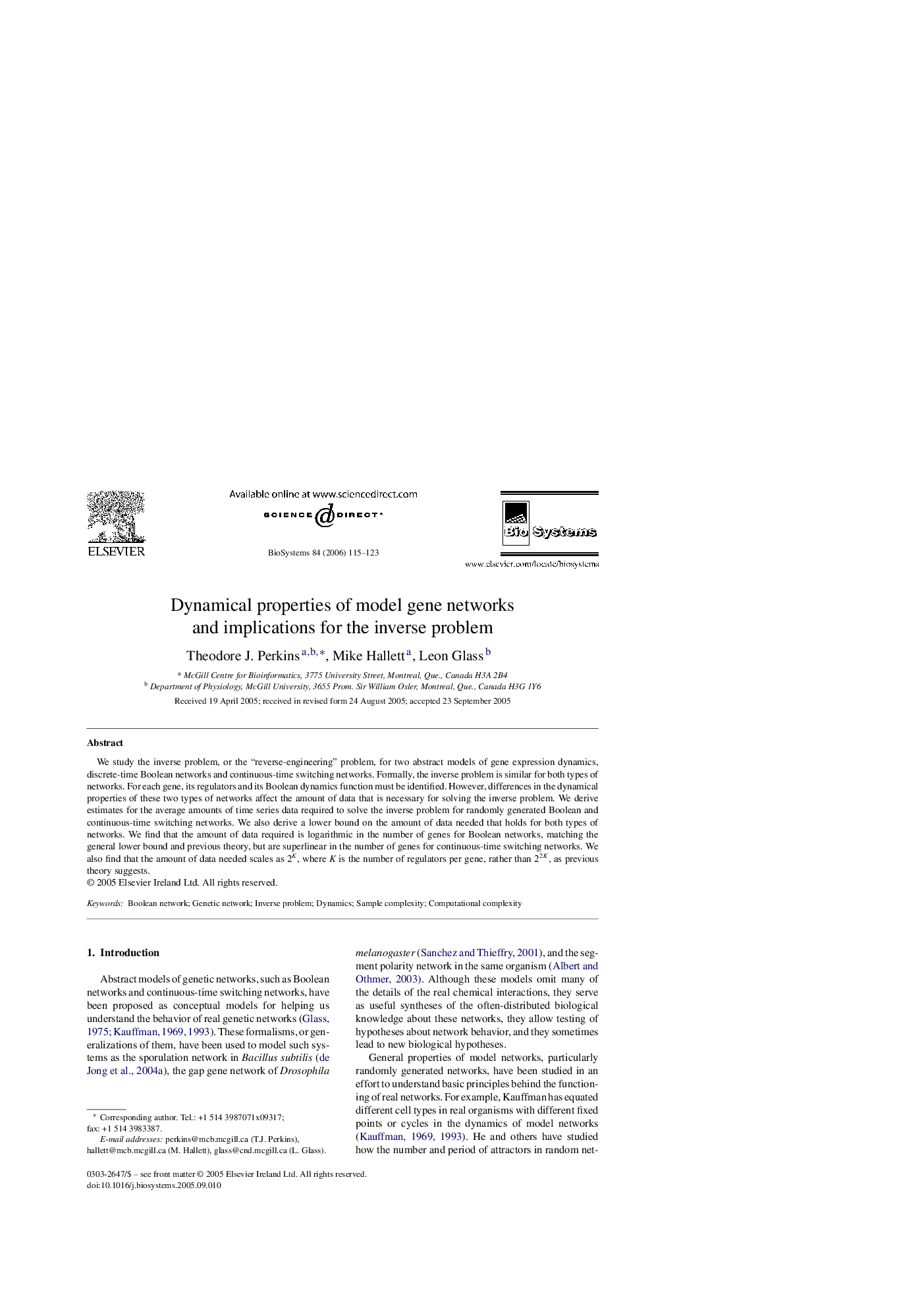| Article ID | Journal | Published Year | Pages | File Type |
|---|---|---|---|---|
| 2077032 | Biosystems | 2006 | 9 Pages |
Abstract
We study the inverse problem, or the “reverse-engineering” problem, for two abstract models of gene expression dynamics, discrete-time Boolean networks and continuous-time switching networks. Formally, the inverse problem is similar for both types of networks. For each gene, its regulators and its Boolean dynamics function must be identified. However, differences in the dynamical properties of these two types of networks affect the amount of data that is necessary for solving the inverse problem. We derive estimates for the average amounts of time series data required to solve the inverse problem for randomly generated Boolean and continuous-time switching networks. We also derive a lower bound on the amount of data needed that holds for both types of networks. We find that the amount of data required is logarithmic in the number of genes for Boolean networks, matching the general lower bound and previous theory, but are superlinear in the number of genes for continuous-time switching networks. We also find that the amount of data needed scales as 2K, where K is the number of regulators per gene, rather than 22K, as previous theory suggests.
Keywords
Related Topics
Physical Sciences and Engineering
Mathematics
Modelling and Simulation
Authors
Theodore J. Perkins, Mike Hallett, Leon Glass,
